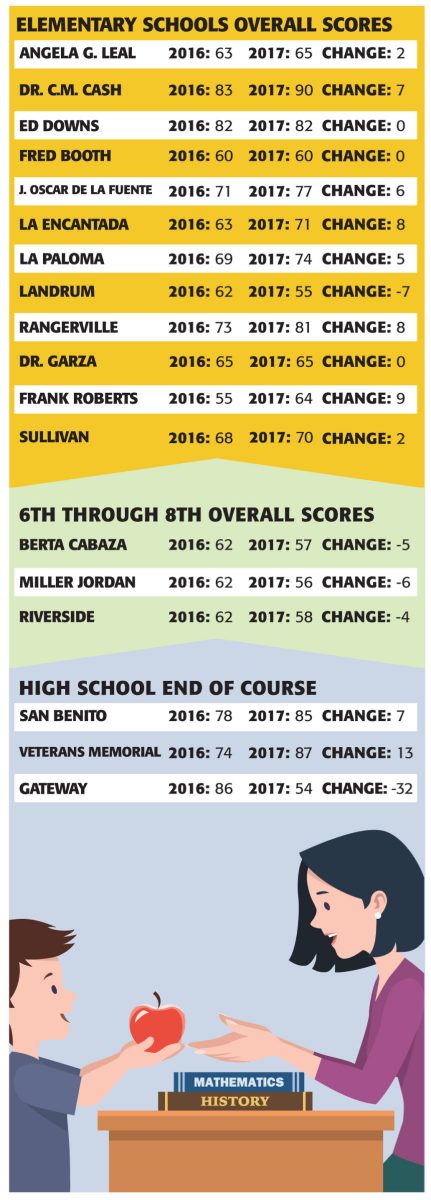SAN BENITO — Last week, school board members were presented with a very preliminary look at the district’s 2017 State of Texas Assessments of Academic Readiness results.
For the most part, schools overall exceeded previous year’s numbers.
However, when broken down by school and exam, that is when the true nature of the testing beast is shown.
Over the last few years, the school district has been on a steady incline where scores are concerned. But there are some areas where the district doesn’t measure up.
Board members agreed, the district as a whole could do a lot better.
For this presentation, Gina Ortiz, Director of Assessment, Research, and Evaluation focused primarily on the combined information.
“That is how the state will evaluate us,” she said. “The state will not look at individual grades and subject areas, but they are going to look at the scores together in one report.”
The scores are based on the accountability subset, meaning the students that were on campus from October to the time they took the test. Those students are part of this current campus report card.
The goal the state has established in San Benito is 60 for index one, also known as students achievement.
For example, Frank Roberts Elementary came in under 60, at 55 in 2016, but scored well above the target with a 64 for 2017.
“Any campus falling under the zone of 60 is in an area where we may be worried they will not meet accountability standards,” said Ortiz.
For accountability, two measures are looked at — index one and index two — which are also known as progress measures. Ortiz said the district is waiting to hear more on index two.
For the most part, with the exception of Landrum Elementary, the elementary schools exceeded the previous year’s numbers, with some tallies staying the same.
This year, it was the middle schools that fell behind. All three middle schools showed decreases in scores.
When asked what went wrong, Ortiz said her office is currently looking at these students individually. Starting with eighth grade, Ortiz said they looked at each student individually. They also looked at their tests from last year and established if there was an improvement.
There was an improvement from the year before, Ortiz determined.
“Their scores as 7th graders were very low and we’re seeing now as 8th graders they showed improvement,” she said.
Ortiz will analyze the other students just like this.
After seeing the preliminary scores, board members agreed more work needs to be done.
“These scores reflect the district as a whole,” said Board Vice President Angel Mendez. “One of the things we need to do is start sharing our best practices. We need to start talking, communicating and sharing about what we do well.”







